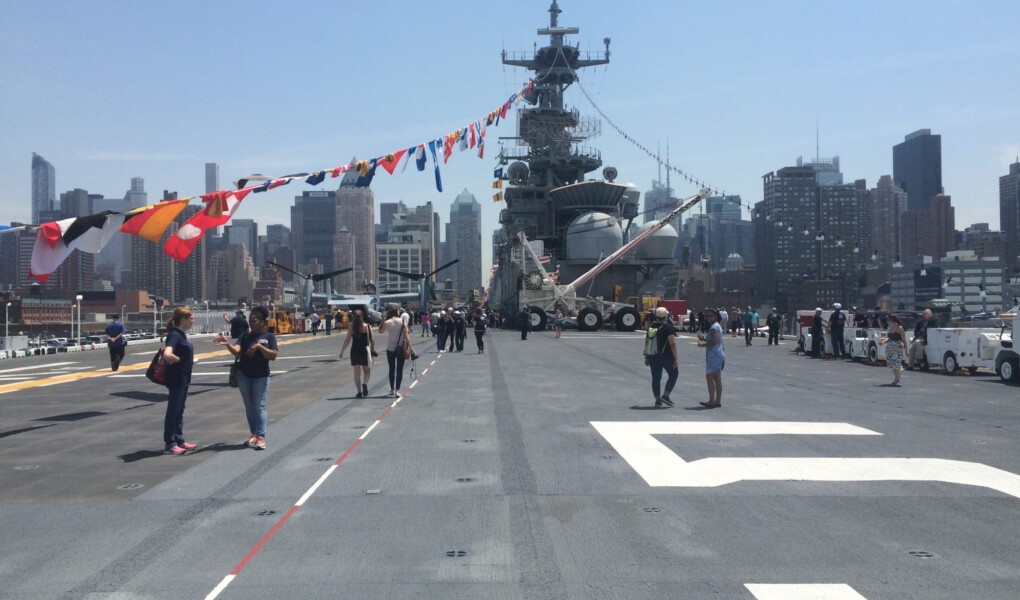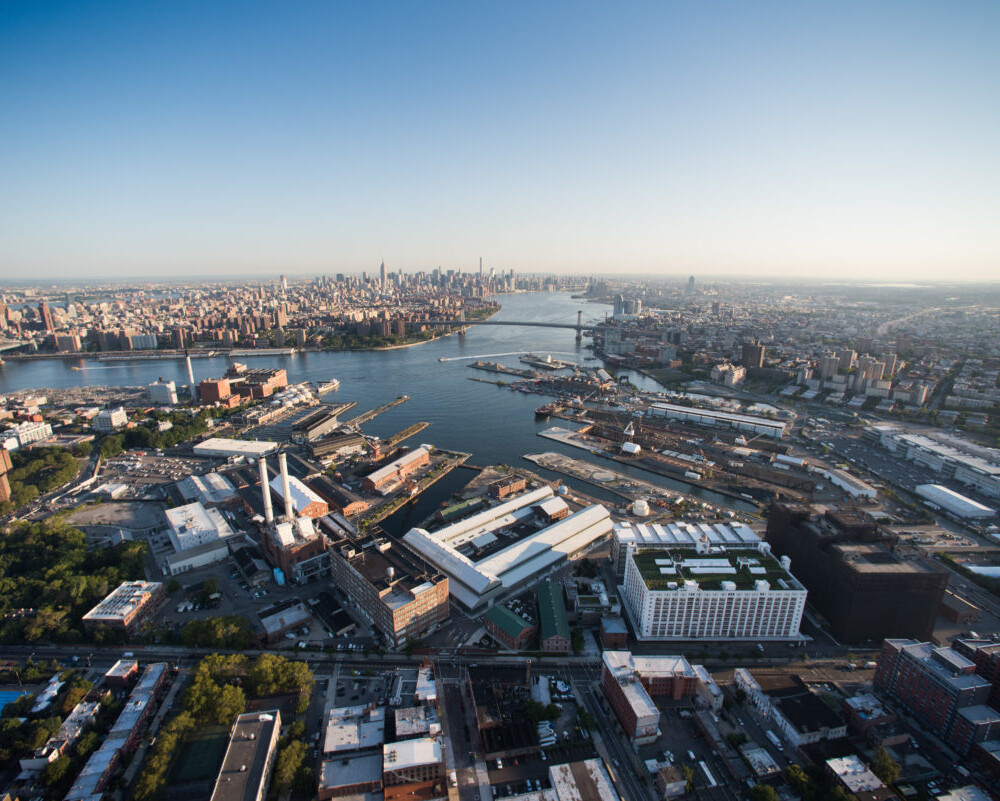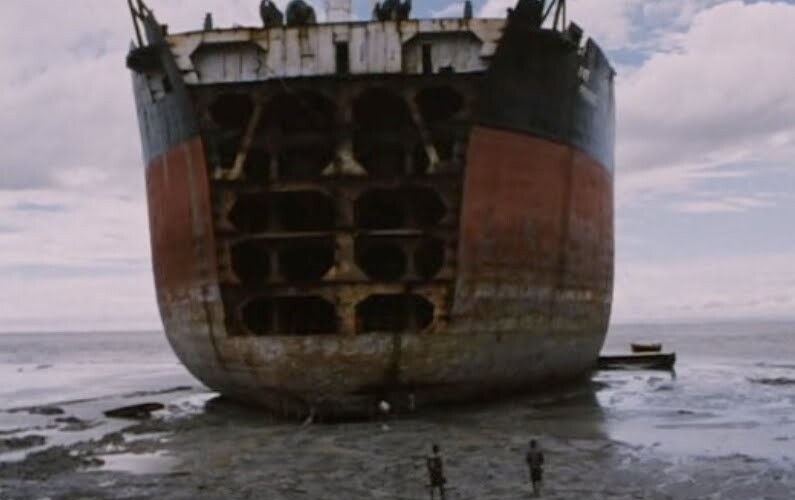This year during Fleet Week New York, we will be visited by more than a dozen ships and units from the US Navy, Coast Guard, Marine Corps, Military Sealift Command, and Royal Canadian Navy that will be berthed at locations in Manhattan, Brooklyn, Staten Island, and the Bronx. Here’s a brief guide to some of the units that will be in town, and be sure to check out the full schedule of events on the official Fleet Week NYC website.
Manhattan Pier 88
- USS Kearsarge open for visitors May 25, 26, 27, and 29, 8am–5pm
For the second year in a row, Fleet Week NYC will include a “big-deck amphib,” the largest visiting ship and definitely one of the highlights. The Landing Helicopter Dock USS Kearsarge (LHD 3) will be on hand, carrying the embarked II Marine Expeditionary Force. This will be a larger unit of Marines than visited New York last year with the USS Bataan, when just the component 24th Marine Expeditionary Unit was in town (meaning there will be more out on the town). This specialized 40,000-ton ship carries land, sea, and air assets to deliver Marines to shore and protect them, including Seahawk helicopters, Ospreys, Harrier jets, amphibious tanks, and hovercraft, and visitors will be able step inside many of these craft.
Kearsarge has a lineage in the US Navy dating back to the Civil War. A modest, 7-gun sloop named after a peak in New Hampshire’s White Mountains, the original Kearsarge became legendary for sinking the Confederate commerce raider CSS Alabama, which had sunk 65 Union vessels, in the Battle of Cherbourg in 1864. Two other ships have carried the name, including an Essex-class aircraft carrier built at the Brooklyn Navy Yard in 1946.
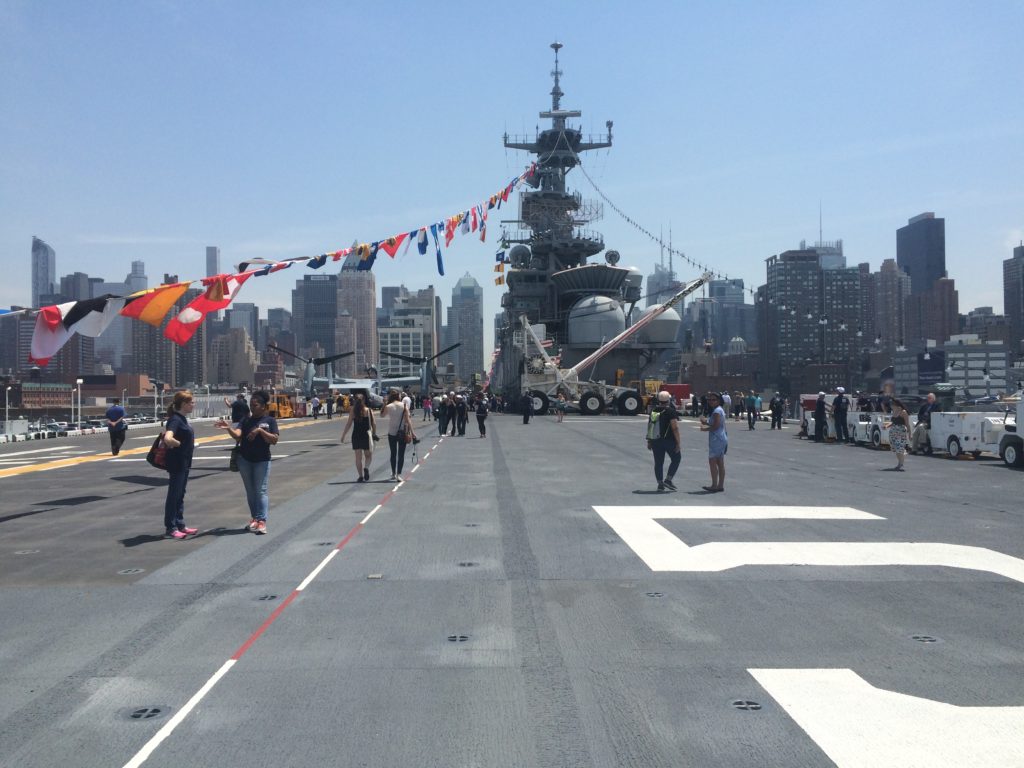
Manhattan Pier 92
- Ships open for visitors May 25–29, 8am–5pm
While the Navy is front and center at Fleet Week, this year the US Coast Guard is bringing one of its newest, most advanced vessels. The Legend-class National Security Cutter (NSC) USCGC Hamilton (WMSL 753) visiting from South Carolina may have a white hull, but it boasts many capabilities of a warship. With greater displacement and range than the Littoral Combat Ships/Fast Frigates, and many of the same radar and weapons systems, its primary mission is law enforcement, but it is a robust platform that can be easily upgraded for other roles.
While these ships are far more capable than the aging Hamilton-class cutters they’re replacing, the Coast Guard plans to replace the 12 existing Hamiltons – some of which are now 50 years old – with just nine NSCs, a product of chronic underfunding of the Coast Guard. The predecessor to these two successful high endurance cutter designs was the Treasury class, two of which were built at the Brooklyn Navy Yard. The namesake of WMSL 753, USCGC Hamilton (WPG 34) was launched in 1937, alongside John C. Spencer (WPG 36); the former was lost to a German submarine attack off Iceland in early 1942, while the latter would score a U-boat kill later in the war.
Alongside this cutter will be Canada’s HMCS Glace Bay (MM 701), a Kingston-class coastal patrol vessel based in Halifax. Last year New York was visited by two of her sister ships, Moncton and Kingston, as well as the retiring destroyer Athabaskan, but the Royal Canadian Navy contingent will be smaller this year.
Intrepid Sea, Air & Space Museum
- RV Neil Armstong open for visits May 25, 10am–12:30pm and May 26, 10am–12pm
- Yard Patrol Boats open for visits May 25–26, 10am–5pm
Intrepid is again playing host to a slew of Yard Patrol Boats from the US Naval Academy at Annapolis, which often serve as the first seafaring experience for midshipmen. And in a departure from the usual lineup of ships, one of the Navy’s newest research vessels will also be visiting, RV Neil Armstrong (AGOR 27). Owned by the Office of Naval Research, the ship is operated by the Woods Hole Oceanographic Institution and is used for ocean surveys in tropical and temperate regions. The ship is crewed by civilian mariners and can accommodate up to 24 scientists on voyages of up to 40 days at sea.
Brooklyn Cruise Terminal
- Ships open for visitors May 25–29, 8am–5pm
Last year Red Hook hosted a pair of Arleigh Burke-class guided missile destroyers, but this year they’re getting a slight upgrade, with two Ticonderoga-class cruisers, USS Monterey (CG 61) and USS San Jacinto (CG 56), both visiting from their homeport of Norfolk, Virginia. Under current US Navy naming conventions, cruisers are named for battles, which happen to connect these two ships – the Battle of San Jacinto (1836) was the decisive battle of the Texas Revolution, leading to Texan independence, while the Battle of Monterey (1846) was an important early victory in the consequent Mexican-American War.
The first ship to bear the name San Jacinto was completed in 1851 at the Brooklyn Navy Yard, an early screw-propelled steamer in the Navy. San Jacinto went on to serve in the Civil War, where it was the center of an international incident involving the British mail steamer Trent. In November 1861, that ship happened to be carrying two Confederate diplomats who were en route to Europe to negotiate diplomatic relations with the newly-formed Confederacy. San Jacinto was commanded by Capt. Charles Wilkes, a native New Yorker with long connections to the Navy Yard, and a man well known for his impetuous and imperious behavior (despite being raised by Saint Elizabeth Ann Seton, his aunt). The incident nearly sparked a war between Britain and the United States.
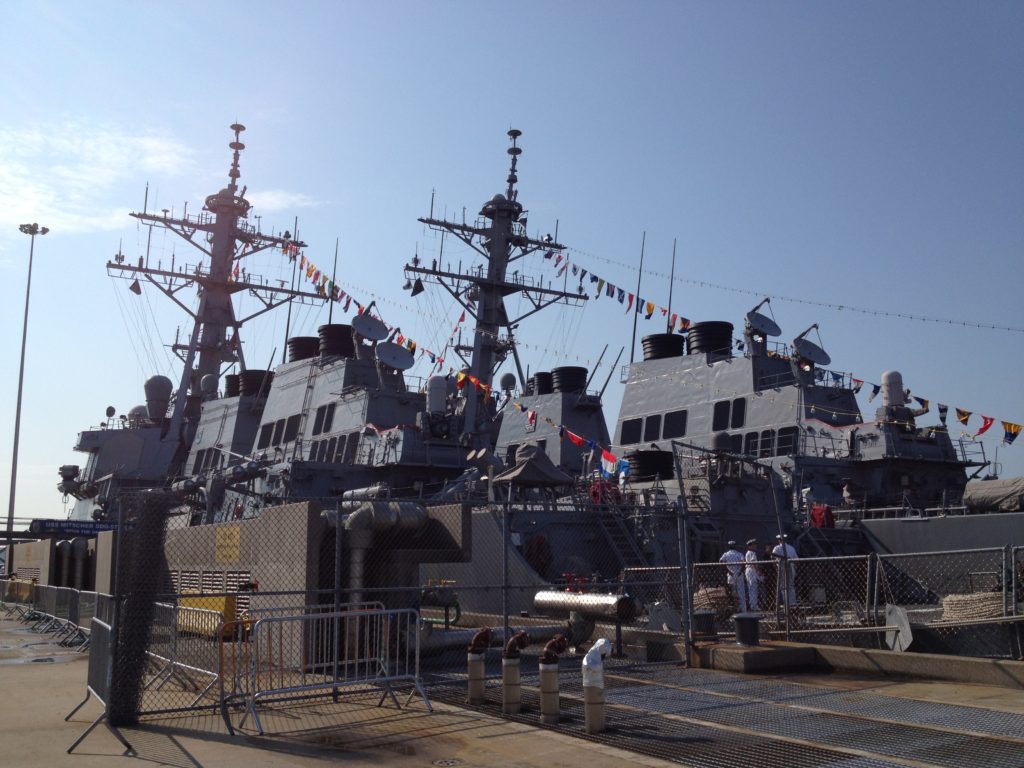
Staten Island Homeport
- Ships open for visitors May 25–29, 8am–5pm
For observers of New York’s working harbor, USCGC Katherine Walker (WLM 552) is a regular sight, a buoy tender based in Bayonne, New Jersey. Just off Bayonne stands Robbins Reef Light, which was constructed in 1883; three years later, its first lighthouse keeper, Captain John Walker, died of pneumonia, making his wife Katherine the de facto keeper. It was four years until President Benjamin Harrison finally made her appointment official, making her the first female lighthouse keeper in America. She served for 33 years, maintaining the light and the grounds, rowing her children to school on Staten Island each day, and rescuing distressed sailors – she’s credited with pulling more than 50 out of the water in her long career.
USS Lassen (DDG 82), a guided missile destroyer, also has an heroic namesake. Helicopter pilot Commander Clyde Everett Lassen was awarded the Congressional Medal of Honor for his rescue in 1968 of two Navy aviators shot down over North Vietnam. Lassen has its homeport in Mayport, Florida.
SUNY Maritime College & US Merchant Marine Academy
- Ships closed to the public
Unfortunately, two of the most interesting vessels of Fleet Week will not be accessible to the general public. At the US Merchant Marine Academy in Kings Point, Long Island, cadets will be treated to a visit by the Cyclone-class coastal patrol vessel USS Zephyr (PC 8). These small ships are rather odd ducks in the Navy – originally built to deliver SEAL teams to shore, they’re much too big for that role, but too small and underarmed for surface combat missions. Instead, most of them serve protecting oil infrastructure in the Persian Gulf, where they are perfectly suited for the shallow waters (though Zephyr currently operates in the Caribbean). But perhaps their most important role in the Navy is that they are one of the few classes of combat ships still skippered by lieutenant commanders, not just captains, providing invaluable command experience to younger officers.
Students at SUNY Maritime College will have the chance to see a ship some of them might end up working on, the Spearhead-class Expeditionary Fast Transport USNS Yuma (EPF 8). This aluminum-hulled catamaran is part of the Military Sealift Command, meaning it is property of the US Navy, but it is crewed mostly by civilian mariners, who serve alongside embarked soldiers, sailors, and Marines. Designed as a fast transport for delivering Army, Navy, and Marine units, the ship has a flight deck and load ramp for vehicles, and it can attain speeds of up to 43 knots. While not a frontline combat ship, the Spearhead vessels have been deployed on humanitarian and goodwill missions around the world where a full combat vessel is not necessary.

